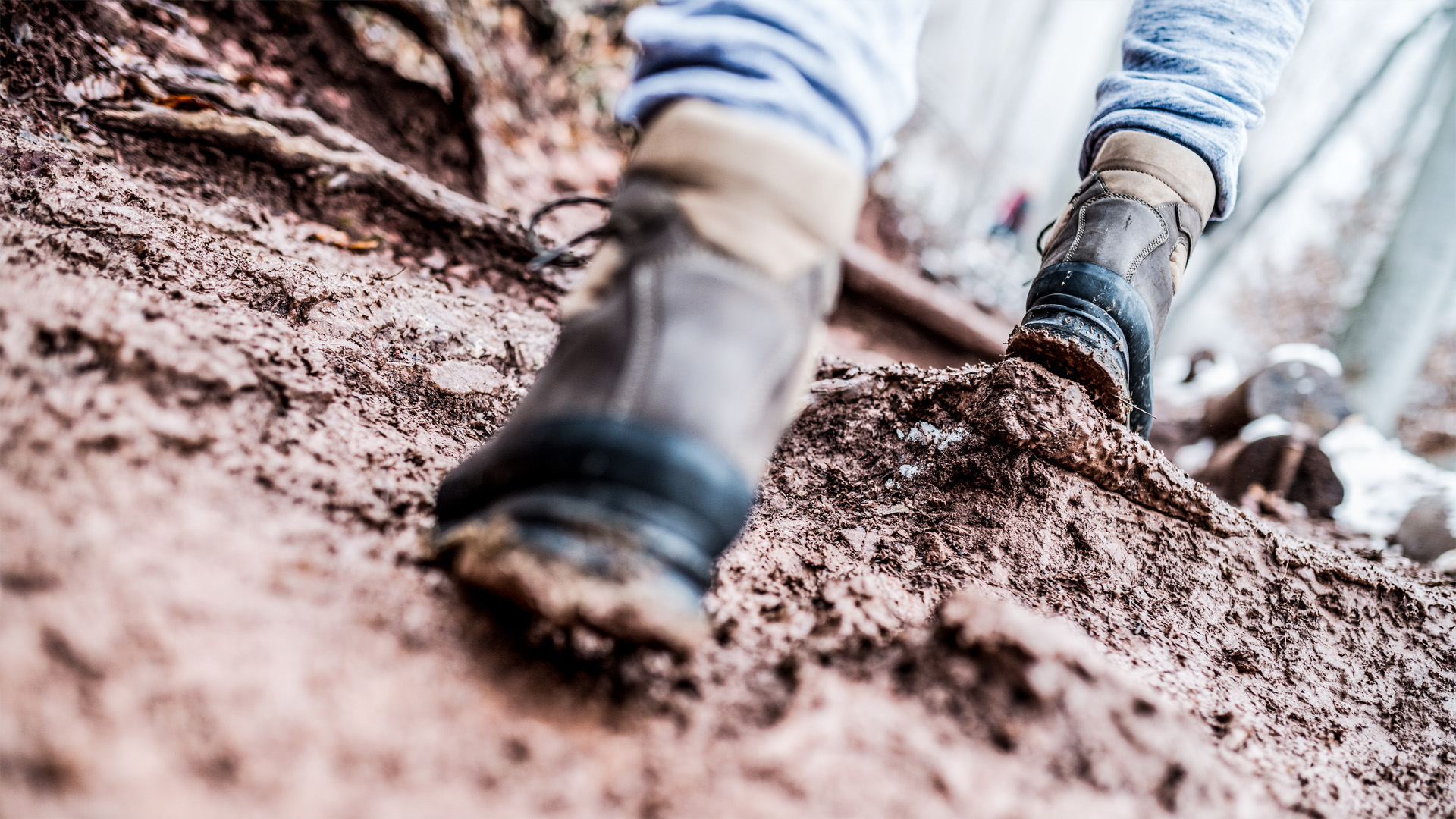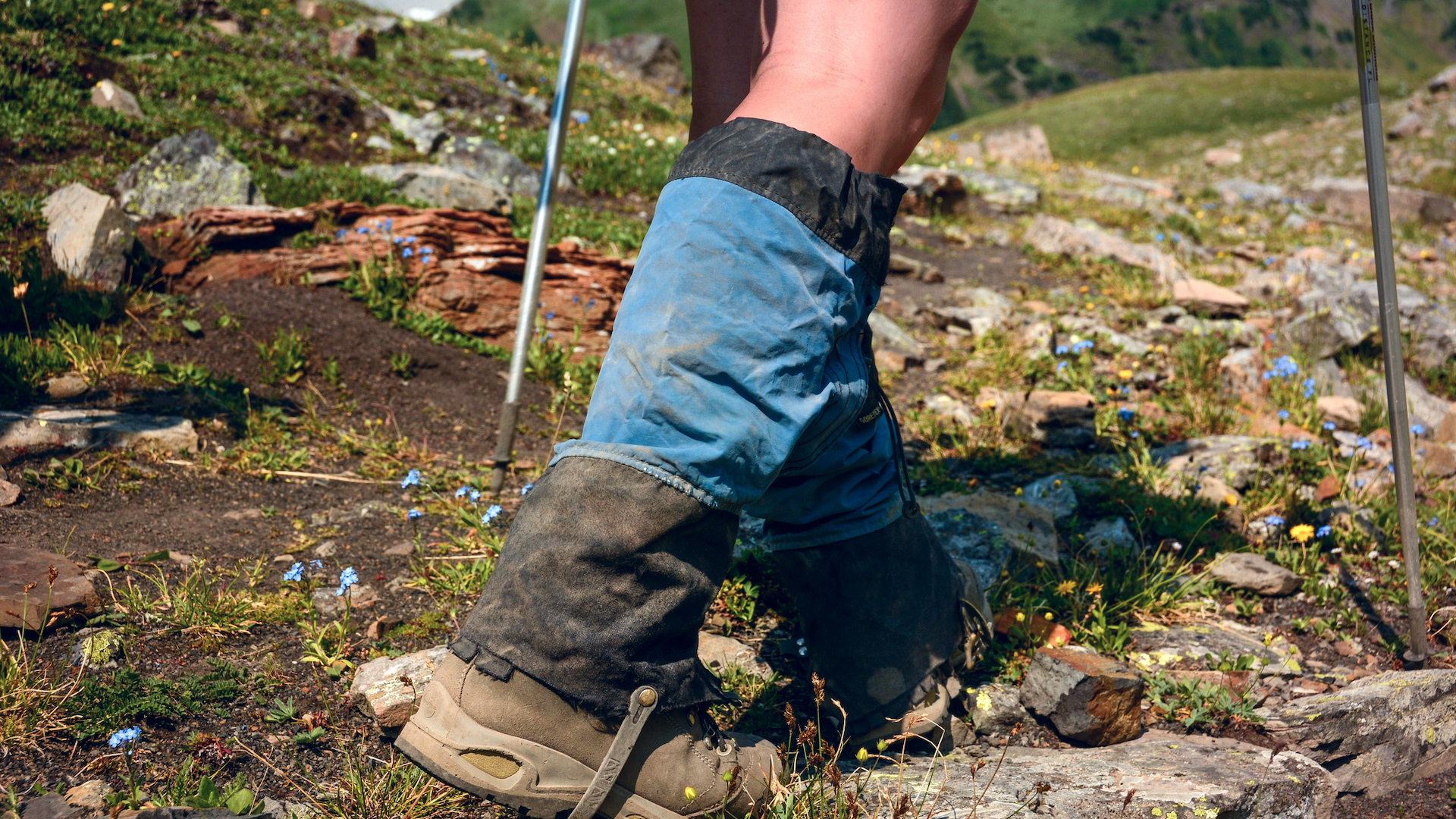Hiking in mud: 10 tips for staying moving when it’s mucky
Our tips for hiking in mud help keep you moving year-round without damaging the trails so you don’t have to wait around for a dry day to have an adventure

In some places, mud is just a season between winter and summer and in others, it’s a permanent state of the terrain. Either way, muddy trails don’t necessarily mean you can’t still enjoy the outdoors, but it is important to know that hiking in mud can be more difficult, and can increase trail erosion if you don’t take care. Our tips for hiking in mud help keep you moving year-round without damaging the trails so you don’t have to wait around for a dry day to have an adventure. Read on to discover how to choose the right trail, the best timing and what gear you’ll need to keep you moving in all seasons.

1. Choose your trail
Some trails are muddier than others. Whether due to spring runoff or recent rain, low lying trails are likely to be more waterlogged and in mountainous areas, north-facing trails will take longer to dry out. During mud season, you might want to opt for paved trails and well maintained trails such as the ones in National Parks, while south-facing trails generally receive more sunlight and dry out faster. If you are somewhere where there is still plenty of snow up high, grab some yaktrax or snowshoes and hike there instead – it’s easier.
2. Go early
Mud is much easier to walk on when it’s frozen. Hike early in the morning when the temperatures are still low and you should find much firmer ground underfoot than you will in the middle of the day when things warm up.

3. Wear hiking boots
Mud season isn’t really the time for your best trail running shoes because your socks will get swampy fast. Get yourself a good pair of waterproof hiking boots that cover your ankles and have good tread and you’ll be able to walk straight through the mud and puddles.
4. Use gaiters
You might sink down quite deeply into soft mud, and it can even come up over the tops of your boots, so a pair of gaiters will prevent any unwanted moisture from penetrating your boots.

5. Use trekking poles for balance
Muddy is not only sticky, it’s slippery. Hiking in mud is a great time to use trekking poles. You can use them to test how deep the mud is before you step into a particularly boggy section and to keep you upright if you’re crossing mud covered rocks which can be especially slick.
6. Stick to the trail
Don’t be tempted to try to skirt the trail as this will increase the erosion and churn up the area round the trail. With proper footwear, you can walk straight through mud and puddles, and use rocks as stepping stones when available.
All the latest inspiration, tips and guides to help you plan your next Advnture!

7. Slow down when you need to
In especially muddy sections, go slow and take smaller steps to try to avoid slipping as getting covered in mud can ruin your day.
8. Don’t stand still for too long
If you step into a deep bog, it can be quite difficult to pull your foot back out, but don’t loiter. Keep moving as the longer you stand, the deeper you’ll sink in and the more difficult it will be to get free.

9. Wash your boots
Mud does cause deterioration of your hiking boots if you don’t wash it off so read our guide on how to clean hiking boots and if there’s a stream near the end of your hike, stand in it for a minute to wash your boots clean rather than trying to deal with it once it’s caked on at home.
10. Bring extra socks and shoes
Bring a spare pair of socks and shoes and leave them in your car to change into after your hike. Then place your muddy boots in a bag so you don’t have to get your car detailed after every hike. If you need a new pair, take a look at our guide to the best hiking socks.
Julia Clarke is a staff writer for Advnture.com and the author of the book Restorative Yoga for Beginners. She loves to explore mountains on foot, bike, skis and belay and then recover on the the yoga mat. Julia graduated with a degree in journalism in 2004 and spent eight years working as a radio presenter in Kansas City, Vermont, Boston and New York City before discovering the joys of the Rocky Mountains. She then detoured west to Colorado and enjoyed 11 years teaching yoga in Vail before returning to her hometown of Glasgow, Scotland in 2020 to focus on family and writing.

